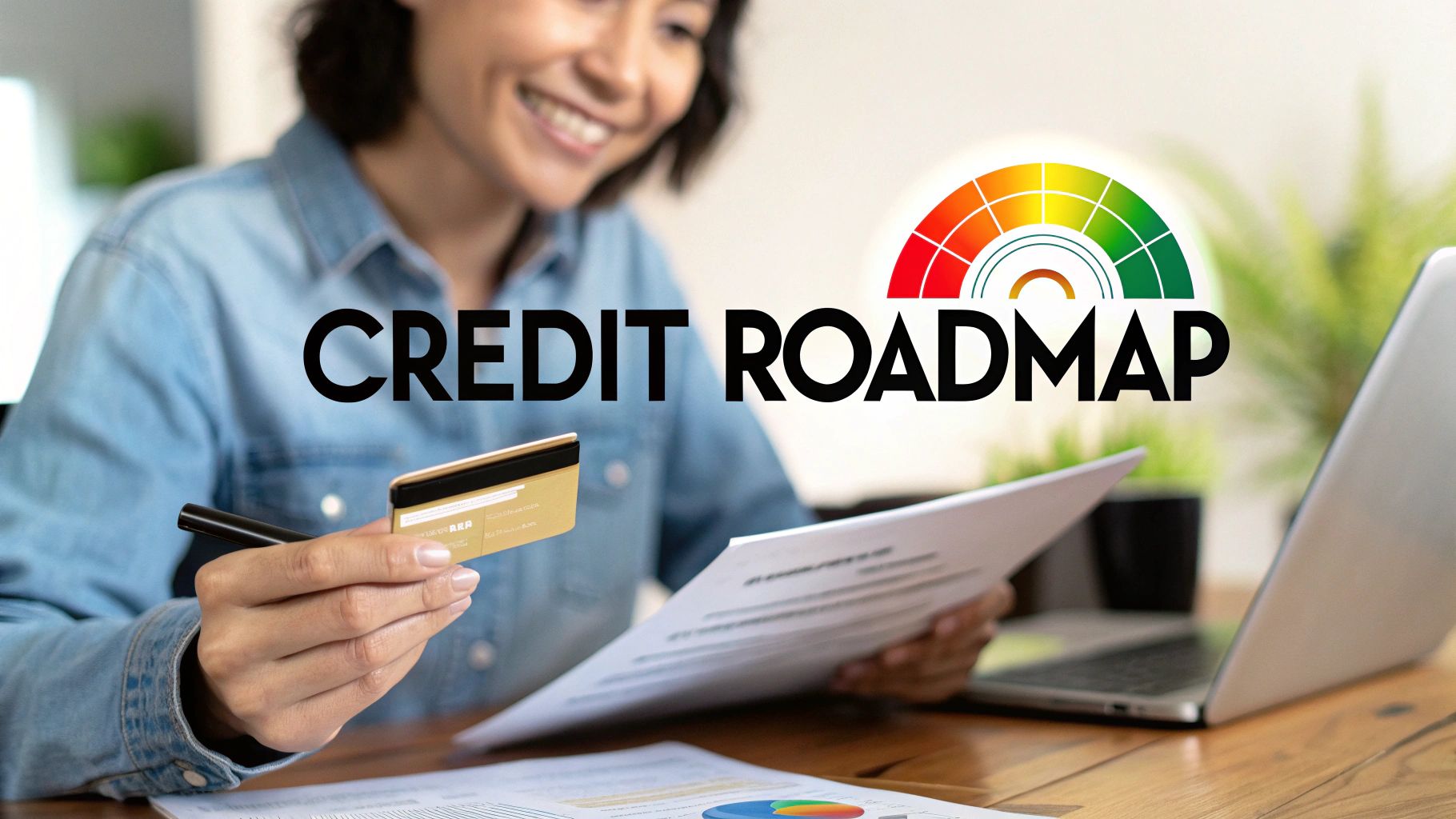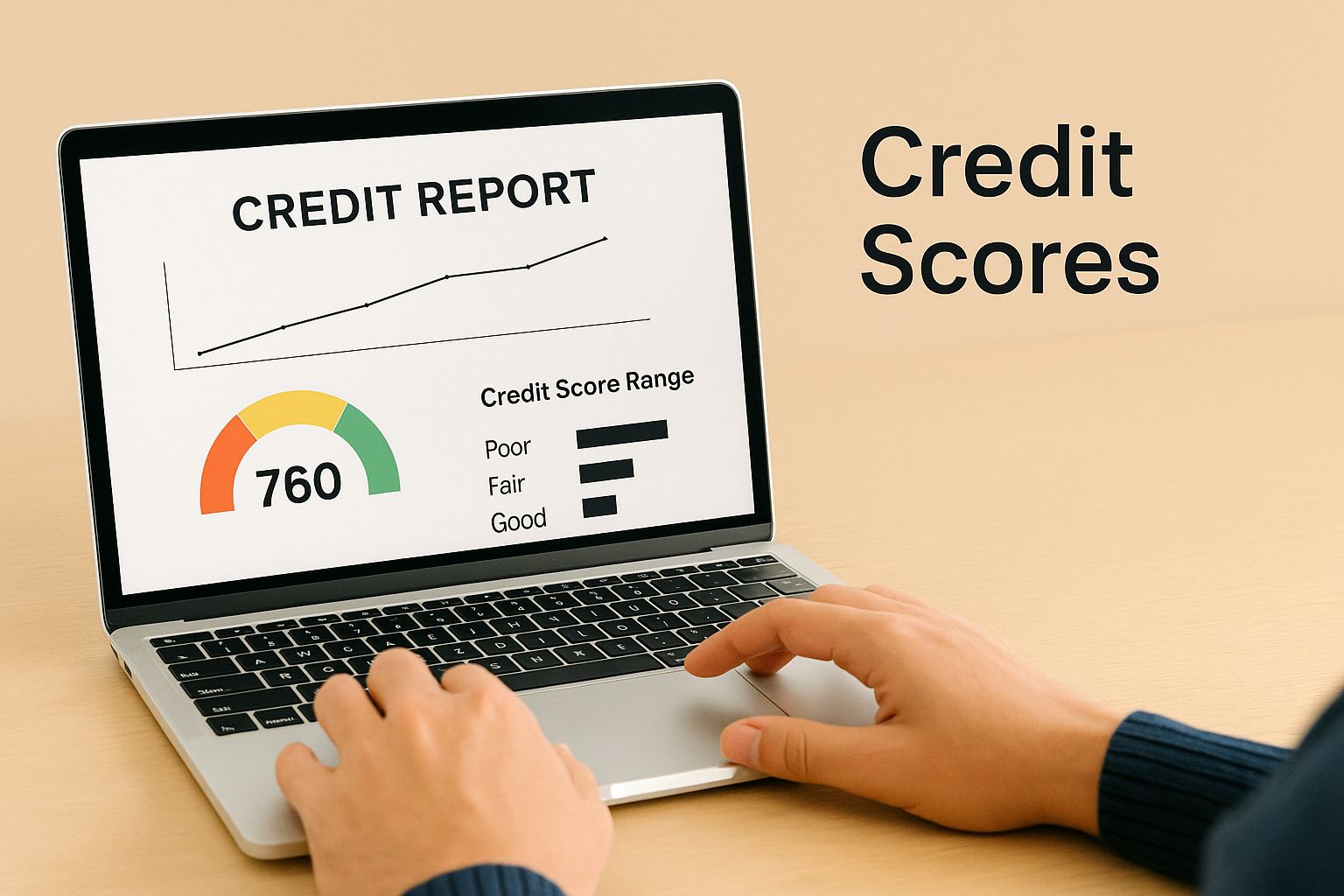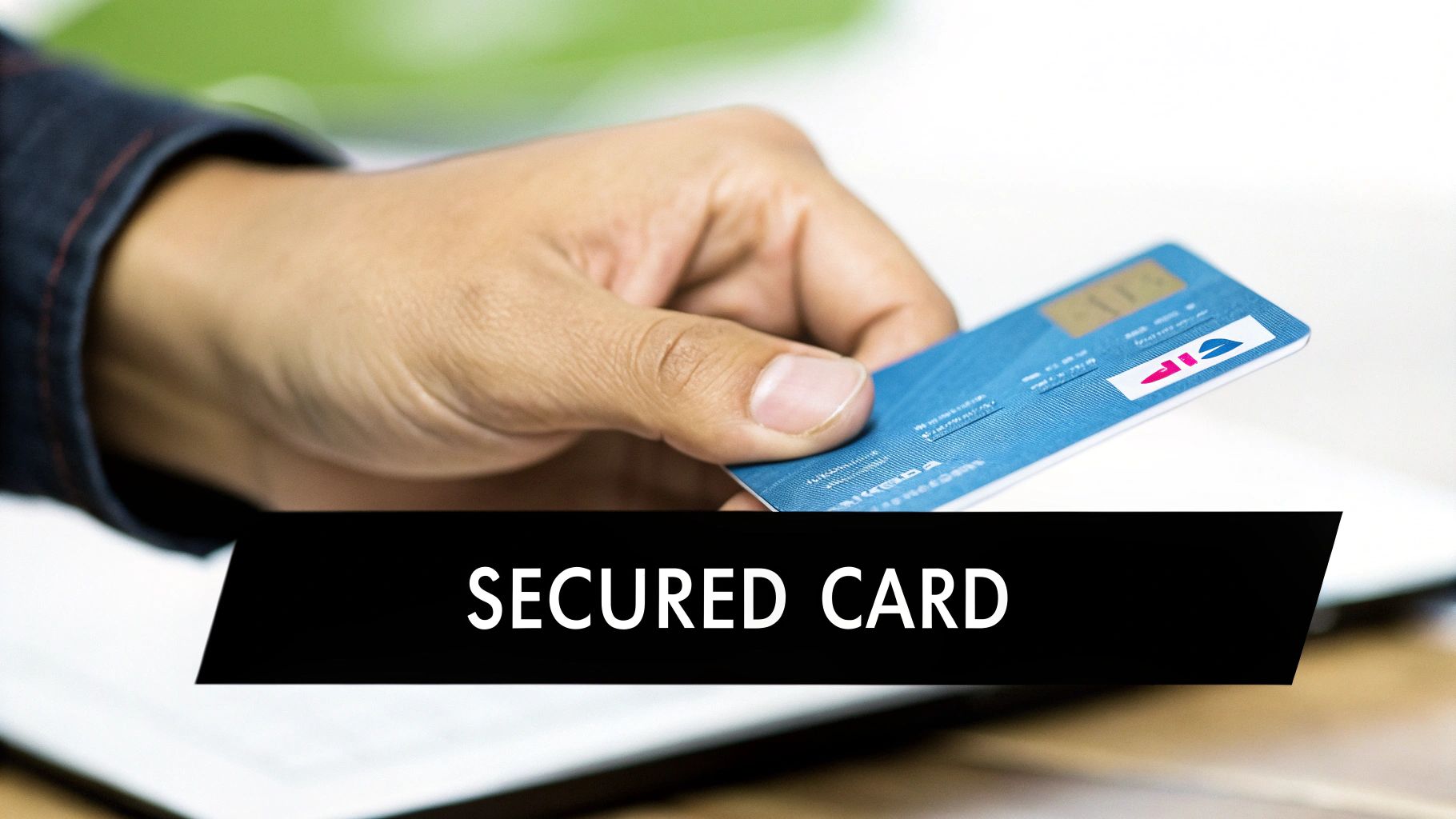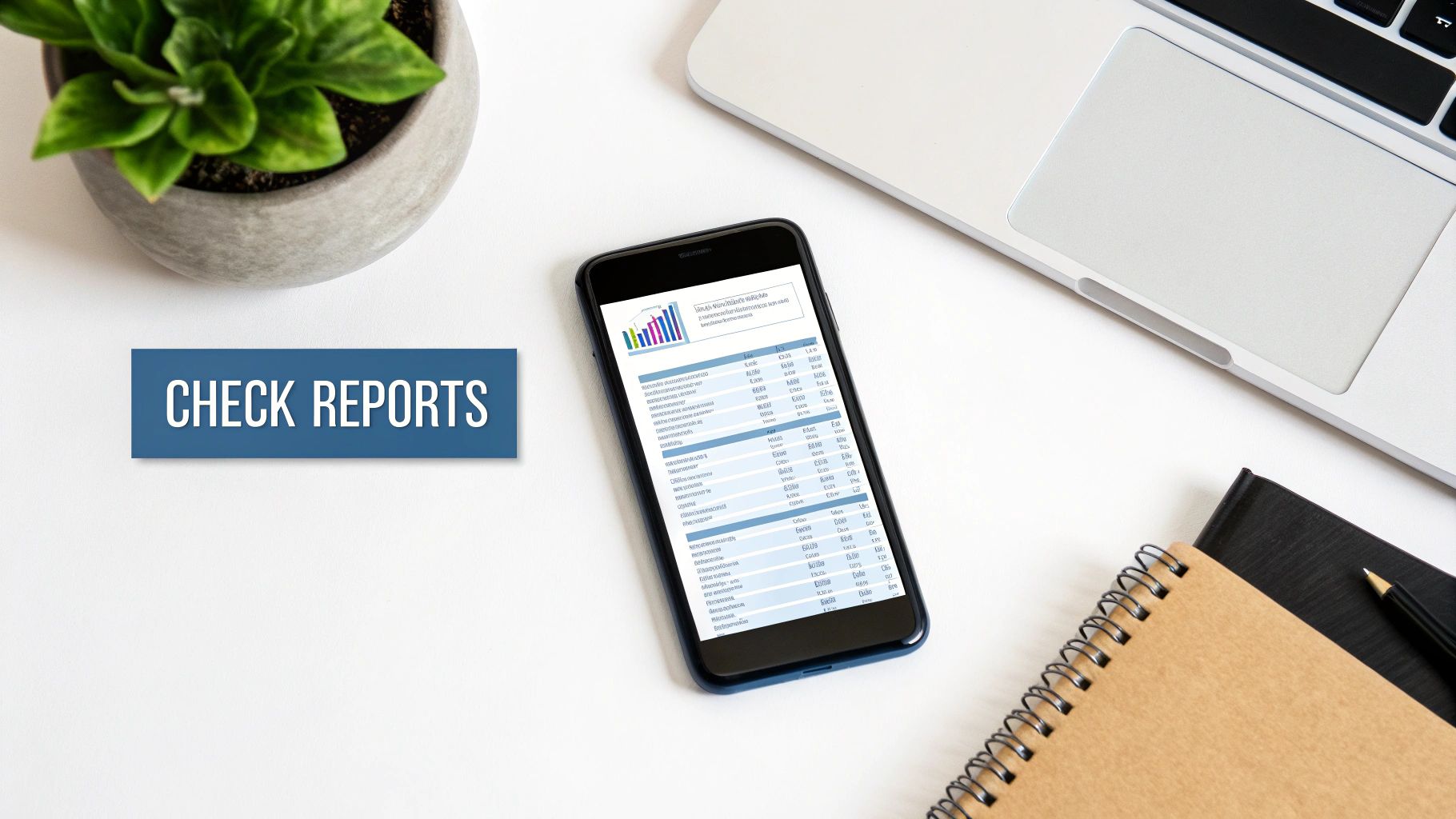How to Establish Credit: Your Roadmap From Zero to Hero

The Credit Reality Check Nobody Talks About

The infographic above gives you a visual guide to checking your credit score—something you should be doing regularly, just like checking your bank balance. Knowing how to interpret your credit report is like having a financial roadmap. It tells you where you stand and helps you make smarter money moves. Now, if you're an ITIN holder, building credit in the U.S. might seem daunting, but trust me, having no credit can be a bigger roadblock than having a few bumps in your credit history. Landlords, insurance companies, and even some employers look at your credit history to gauge your reliability.
Imagine this: you're trying to rent a great apartment, but you have no credit history. You might end up paying a much higher security deposit, or worse, getting rejected altogether. That's why understanding how to build credit is so important. Think of it like planting a tree. It takes time and care for it to grow strong.
Don't expect your credit score to magically shoot up overnight. The real key is consistency. Paying your bills on time and keeping your credit card balances low are essential habits. And don’t get discouraged if you don’t see big changes right away. Building credit is a marathon, not a sprint.
The goal isn't about reaching a perfect score; it's about opening up financial opportunities. A good credit score can make it easier to get a loan, rent an apartment, and even score better insurance rates. It's about having more control over your financial future. For ITIN holders, platforms like itinscore offer tailored guidance and resources. They provide strategies and support designed specifically for those navigating the U.S. credit system with an ITIN.
Your First Credit Card: Making the Right Choice

So, you're ready to start building credit? Awesome! Picking that first credit card can be a little overwhelming, though. I’ve been there, and I know it can feel like a jungle out there. Let's explore some solid options for beginners: secured cards, student cards, and becoming an authorized user. Each one has its own advantages and disadvantages, and the right fit can really jumpstart your credit journey.
I'll start with secured credit cards. They're a fantastic starting point. You'll put down a security deposit, which usually becomes your credit limit. It’s kind of like training wheels for your credit. Essentially, you're lending yourself money to show you can manage credit. I know, it sounds a little weird, but it's a proven way to build a positive credit history. A friend of mine did this, and within a year, he was able to upgrade to a regular unsecured card.
Another option, if you're in school, is a student credit card. These often have more flexible credit requirements than standard cards. The cash back and other perks can be attractive, but don't let them distract you from responsible use. Don't overspend chasing rewards. The real goal is to make those payments on time, every time, and keep your balance low.
Becoming an authorized user on someone else's account can be a quick way to boost your credit. They add you to their card, and their good credit habits (hopefully!) show up on your credit report. It's a great option if you have a family member or close friend with excellent credit who’s willing to help. Keep in mind though, their mistakes can impact you, too, so choose your authorized user wisely.
Credit cards are important tools in building a good credit score, and they've been around for a while. Did you know the first modern credit card was introduced in the U.S. by Bank of America in 1958? Now they’re a staple in personal finance, letting people build their credit through responsible use and consistent payments. By 2020, the average American had around 2.35 credit cards. Here's some more interesting info on that.
Building good credit takes time and a solid plan, and choosing the right first card is a big step. For ITIN holders specifically, there's some helpful info on banks that accept ITINs.
Credit Card Options for Building Credit
To help you choose the best starting point for your credit journey, I've put together this comparison table. It highlights the key differences and similarities between a few popular credit card types.
This table makes it easy to compare your options and see which card type aligns best with your current situation and financial goals. Remember, starting with the right card can make all the difference.
Beyond Traditional Cards: Modern Credit Building Tools

Building credit used to be all about credit cards. That's just how it was. But thankfully, the financial world isn't static. New ways to build credit are popping up all the time, offering more paths to financial health. It's like finding a shortcut on a hike—same destination, but a faster and potentially more enjoyable journey.
One of the coolest new tools is the credit-builder loan. Think of it as a savings account that also helps your credit. You make regular payments, and that money is held safely in escrow. Once the loan is paid off, boom—you get the money back and your responsible payments have been reported to the credit bureaus. Building credit and saving money? I'm in.
Then there's the awesome development of apps that report rent and utility payments. I mean, think about it, you’re making these payments every month anyway, right? Why shouldn’t they count towards your credit score? These apps connect your everyday financial life to the credit bureaus. This is especially useful for ITIN holders. It’s like adding another dimension to your credit profile, showcasing your financial responsibility more comprehensively. You might find this helpful: checking your credit score with your ITIN.
This shift to digital financial tools is a game-changer. It's creating opportunities for folks who may have been excluded from traditional credit systems. Even the infrastructure supporting these digital tools, like data centers, is playing a role. The growth in data centers is expected to strengthen credit quality in related industries, according to a report by S&P Global, and this trend is projected to continue supporting credit quality through 2025. This digital infrastructure is a crucial foundation for the expansion of online lending platforms and fintech companies, creating more ways to access credit, especially in underserved communities.
All these new tools put you in the driver's seat. By exploring the different options, you can craft a credit-building strategy that aligns with your own financial goals. It's all about being informed and picking the tools that work best for your situation. A strong credit foundation? You got this.
Reading the Economic Room: When to Build Credit
Building credit isn't something you do in a vacuum. It's all happening within a bigger economic picture, and that picture can seriously impact your results. Think of it like planning a road trip: you need to check the weather, traffic conditions, and maybe even gas prices. Knowing how things like interest rates and lending policies affect your credit journey is just as important.
Picking the right time to apply for credit is a bigger deal than most people think. Imagine applying for a loan during a recession when banks aren't exactly handing them out like candy. It’s an uphill battle. Knowing when to be aggressive and when to play it safe with your credit building can make all the difference.
Economic conditions are a huge factor. For example, when the economy is booming, lenders are usually more willing to give out credit, and interest rates might be lower. That's a great time to apply for a credit card or loan. But when the economy slows down, it gets tougher to get approved for new credit because lending standards tighten and interest rates often go up.
Believe it or not, even what's going on in the global economy can affect your credit journey. Things like global economic growth forecasts and central bank policies can trickle down and influence your borrowing power. For example, Fitch Ratings projected global economic growth to slow to 2.6% in 2025 from 2.8% in 2024. This kind of slowdown can make things harder, especially for new borrowers.
Navigating Economic Uncertainty
Don't let economic news scare you off. Instead, learn how to adapt your credit strategy. Recognize the signs of tightening lending standards, like higher credit score requirements or larger down payments. Think of it as adjusting your sails when the wind changes.
When the economy feels uncertain, prioritize protecting the credit you’ve already built. This might mean paying down your existing debt, avoiding new credit applications, or focusing on keeping your credit utilization low. By staying informed and adjusting your approach, you can navigate any economic weather and build a strong credit foundation.
Here's a handy table to summarize how different economic scenarios can impact your credit-building strategy:
How Economic Conditions Affect Credit Building Impact of different economic scenarios on credit establishment strategies
This table shows you how to shift your strategy depending on what the economy is doing. During expansion, it might be a good time to take advantage of lower interest rates. But during a recession, protecting your existing credit is key. Use this table as your guide to make smart decisions about your credit, no matter what the economic forecast holds.
Building Credit Habits That Actually Last
Getting your first credit card feels like a huge win, right? It is! But it's really just the starting line. The real power comes from building smart habits that help you establish excellent credit over the long haul. Think of it like getting your driver's license - exciting, for sure, but becoming a truly confident driver takes consistent practice and focused effort. Here’s how to create credit habits that stick with you.
Mastering Credit Utilization
One of the most important factors affecting your credit score is credit utilization. This simply means how much of your available credit you're actually using. A good guideline is to stay below 30%. So, for example, if your credit limit is 1,000, aim to keep your balance under 300. It’s like a gas tank – keeping it mostly full shows you're managing your resources well. A simple trick is to set up payment reminders or even automate your payments. This way, even when things get hectic, you’re less likely to miss a payment and accidentally max out your card. For a deeper dive into this topic, check out this helpful resource on understanding your ITIN credit report.
Automating Your Success
Since we’re talking about automation, let me tell you, setting up automatic payments for your credit card bills is a game-changer. It takes away the mental stress of remembering due dates and helps you avoid late payments, which can really hurt your credit score. Personally, I’ve been using automatic payments for years, and it’s been incredibly helpful for managing my credit. One less thing to worry about, and my credit stays on the right track.
Monitoring Without Obsessing
It's definitely wise to keep tabs on your credit report, but don’t get consumed by every little change. Regularly checking your score is a good habit, but fixating on every point fluctuation can drive you nuts. Building good credit takes time. Focus on the overall progress and the positive habits you're building, instead of stressing about small, short-term shifts.
Budgeting and Emergencies
Budgeting with credit is key. My advice? Treat your credit card like a debit card - spend only what you know you can pay back. This keeps you from accumulating debt and helps maintain a healthy credit utilization rate. But let’s be real, unexpected things happen. If you have to use your credit card for an emergency, make a plan to pay it off as quickly as possible to minimize the impact on your credit.
The Psychology of Good Credit
Building good credit is also a mental game. It’s about consciously choosing to be responsible with your finances. Delayed gratification is a big part of this. It’s tempting to buy things now and figure out the payment later, but building strong credit requires thinking long-term. The benefits of a good credit score – lower interest rates, easier access to loans – make those smart financial choices today absolutely worthwhile.
Sidestepping the Credit Building Landmines
Building credit can feel like navigating a minefield, even when you think you're doing everything right. It's surprisingly easy to stumble into traps that can set you back. Trust me, I've been there. So let's talk about some common pitfalls and how to avoid them.
One mistake I've seen people make is closing their first credit card after they've upgraded to a fancier one. It feels like a sensible move – who needs that old card, right? Wrong. Closing that initial account shortens your overall credit history, which can negatively impact your score. A longer credit history shows stability, so keep that first card open. Put a small recurring charge on it, like a streaming subscription, and set up auto-pay. This keeps the account active without any effort and helps build that valuable credit age.
Another common trap is applying for too many credit accounts in a short time. Each application triggers a hard inquiry on your credit report. Think of it like a little ding on your score. A few here and there aren't a big deal, but a bunch of them in quick succession makes you look risky to lenders. They might worry you're overextending yourself. My advice? Space out those applications, especially when you're just starting to build your credit profile.
This screenshot from myFICO shows the different credit score ranges and their significance. A higher score unlocks better interest rates and loan terms. Building excellent credit is about understanding these ranges and managing your finances strategically to hit your target score.
Finally, a word of caution about "quick fix" credit repair schemes. Some companies promise to magically erase negative marks from your report. Be skeptical. Real credit repair takes time and consistent effort. Focus on building positive habits, like paying your bills on time every time and keeping your credit utilization low (meaning, don't max out your cards!). It's not as exciting as a quick fix, but it's the sustainable way to build credit that lasts. Remember, it's a marathon, not a sprint. Don’t get discouraged by occasional bumps in the road. Learn from them, adjust your strategy, and keep moving forward.
Your 90-Day Credit Building Blueprint
Alright, let's get down to brass tacks and map out a credit-building plan you can kick off today. Forget generic advice; this is a personalized roadmap based on what actually works, especially for ITIN holders like yourself. We'll set realistic milestones for your first 30, 60, and 90 days, and lay the groundwork for long-term credit success.
First 30 Days: Laying the Foundation
Think of the first month as prepping the soil before planting a garden. It’s all about getting the basics in place.
Days 30-60: Building Momentum
Now that the seeds are planted, it’s time to nurture their growth. Consistency is key here.
Days 60-90: Refining Your Strategy
After two months, you’ll have a better grasp of what’s working and where you can improve. Now it’s time to fine-tune your approach.
Building credit takes time and effort, so celebrate your progress – even the small victories. Don't get discouraged by setbacks; just adjust your strategy and keep going. Ready to take charge of your financial future? Join itinscore today and start building a brighter tomorrow.